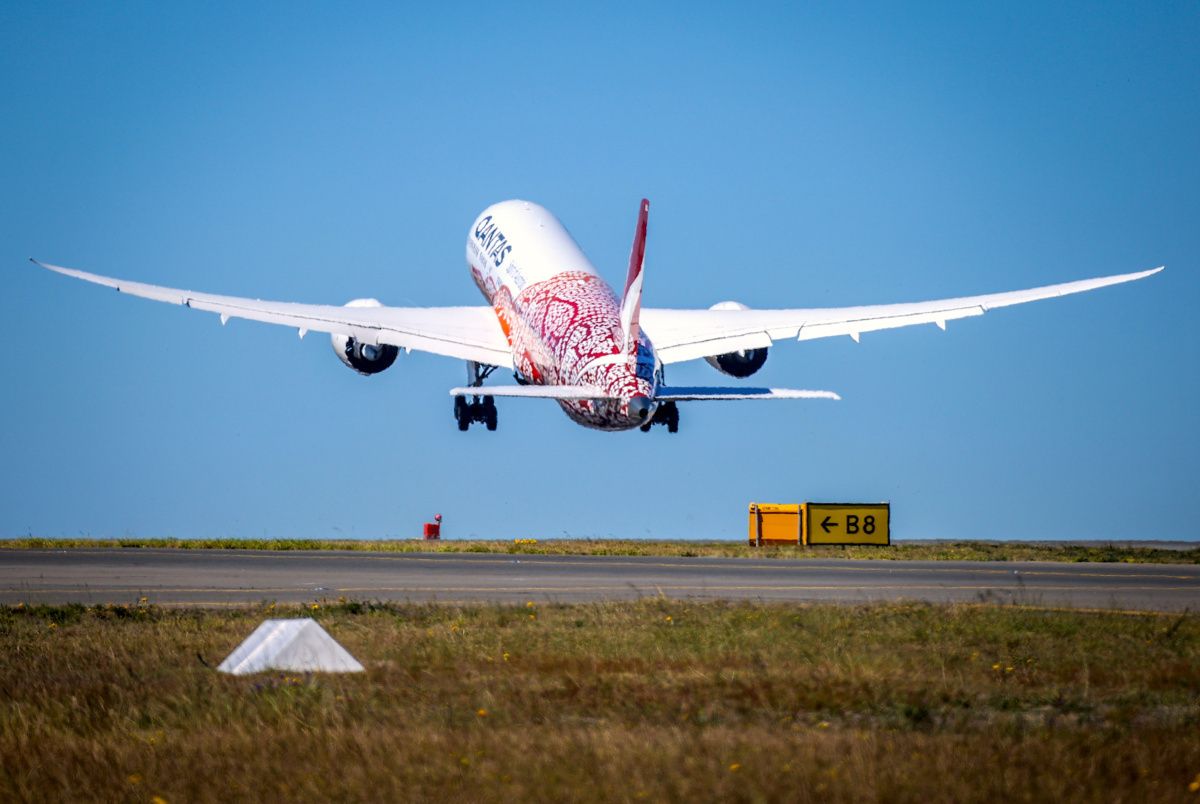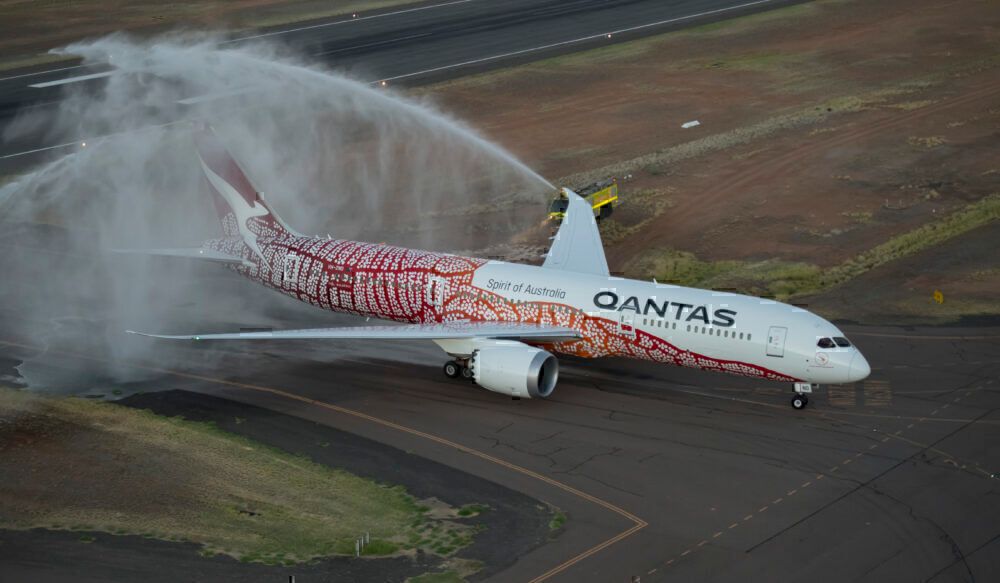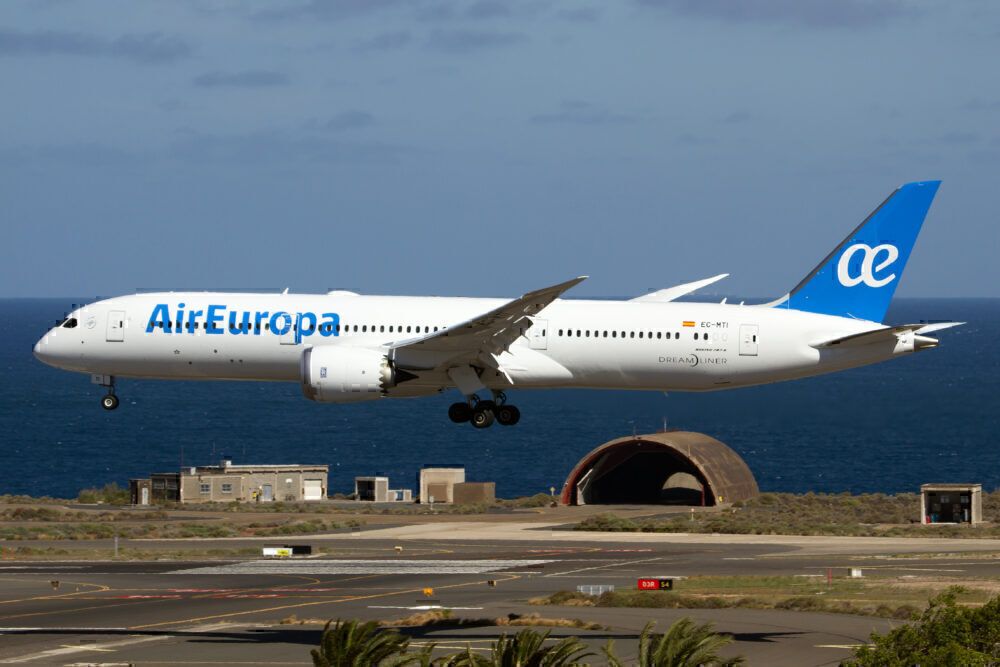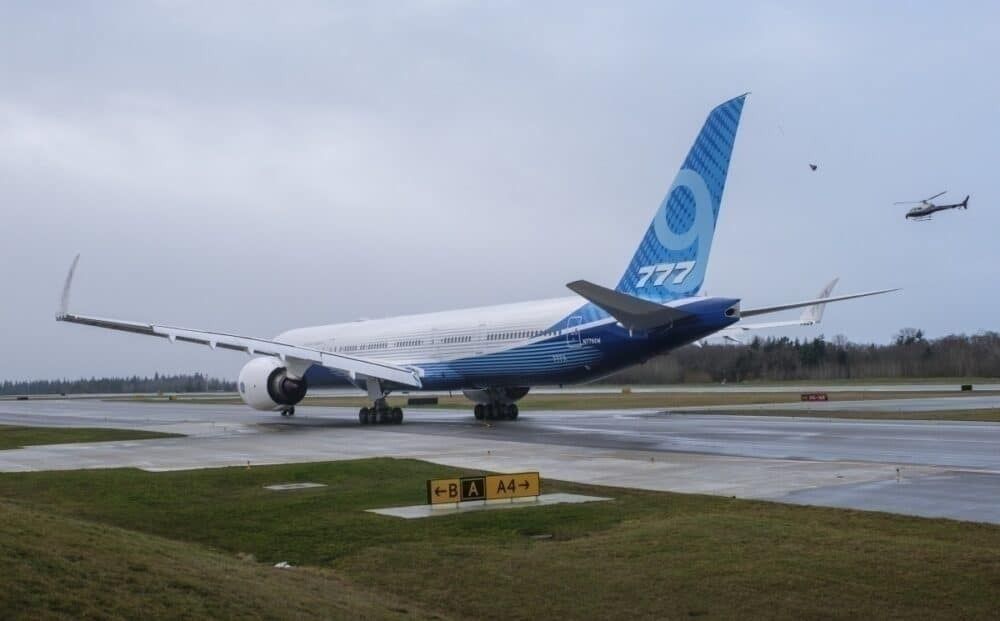The curved wings of the Boeing 787 are one of the type's most iconic features. They render the 'Dreamliner' easily recognizable compared to Boeing's older single-deck widebody aircraft, such as the 767 and 777. But what are the reasons for this striking design?
Working towards a greater operational range
One of the Boeing 787's greatest selling points for its operators is its very long operational range. Indeed, earlier this week, Australian flag carrier used one of its 11 787-9 aircraft to operate multiple non-stop flights from London Heathrow to Darwin, in the country's Northern Territory. The airline's London-Australia flights typically have to make a stop in Singapore.
The Dreamliner's range is slightly different among its three variants. According to Boeing, the figures are as follows:
- 787-8 - 7,305 NM (13,530 km)
- 787-9 - 7,530 NM (13,950 km)
- 787-10 - 6,345 NM (11,750 km)
These statistics are the culmination of extensive research and development by the American manufacturer, which resulted in numerous fuel-saving factors. One of these is the aircraft's striking, curved wing design.
Designed for optimized fuel efficiency
The Boeing 787's curved wings mean that wing flex is a clearly visible phenomenon. While it may look unusual or even disconcerting to see so much vertical wing movement, there is a good reason for allowing this to occur. Boeing states that the Dreamliner's fly-by-wire technology:
"...optimizes the shape (or 'camber') of the wing automatically to save the most fuel. During cruise, the wing trailing edge automatically adjusts upward and downward to continually optimize the camber for maximum efficiency."
This technology also minimizes the effect of turbulence that may otherwise cause a disturbance to passengers. It is not just the shape of the wing that optimizes the 787's performance, but also the materials from which they are constructed. To this end, Boeing states that:
"The use of composite materials in the wing structure allows the 787 wing to have a higher aspect ratio (the square of the wing span divided by the wing area) than previous aircraft."
The result of these various features is something of a perfect combination for the Dreamliner's operators. Due to its abundance of technology, it can fly faster than its predecessors, while consuming less fuel.
Removal of the need for winglets
The swept-back nature of the Boeing 787's curved wings results in the aircraft having what are known as 'raked wingtips.' This also functions as an alternative option to winglets. Once again, this feature also contributes to increases in both fuel efficiency and, consequently, operational range. This to the subsequent reduction in aerodynamic drag caused by vortices that develop as the wingtips cut through the air.
Boeing's next widebody project, the next-generation 777X (which will also boast folding wingtips), is also set to have its wings swept back in such a manner, albeit at a lesser angle. The Airbus A350 is another airliner whose wings boast a similar sweep angle to the Dreamliner that it was designed by the European manufacturer to compete with.
The future of wing design seems set to continue to develop in a fascinating manner, as manufacturers continue to strive for optimized fuel efficiency. Boeing is even looking to re-write the rulebook with its Transonic Truss-Braced Wing (TTBW) airliner. It will certainly be interesting to see how wing technology will evolve in years to come.
What are your thoughts? Let us know what you think in the comment section?




